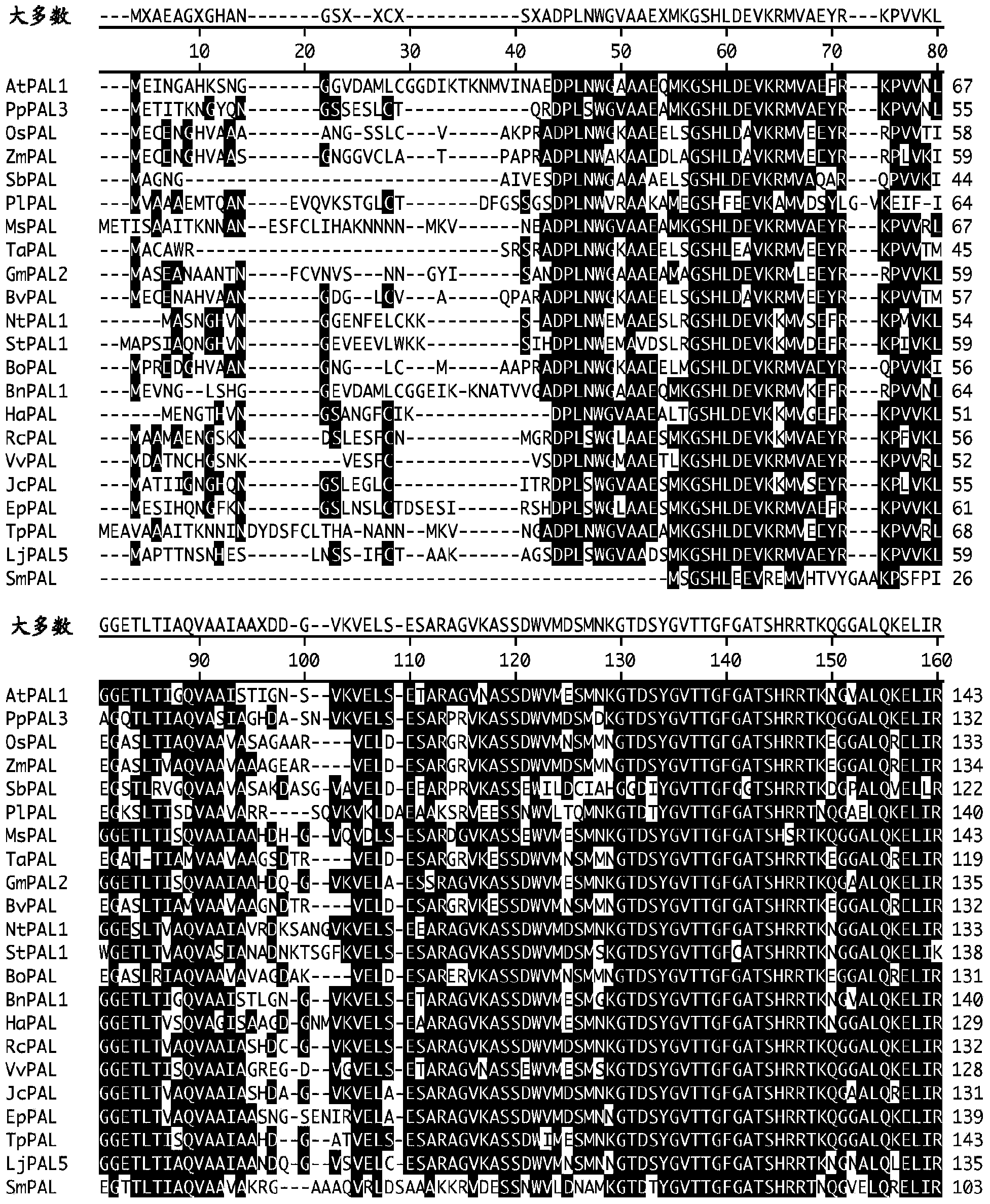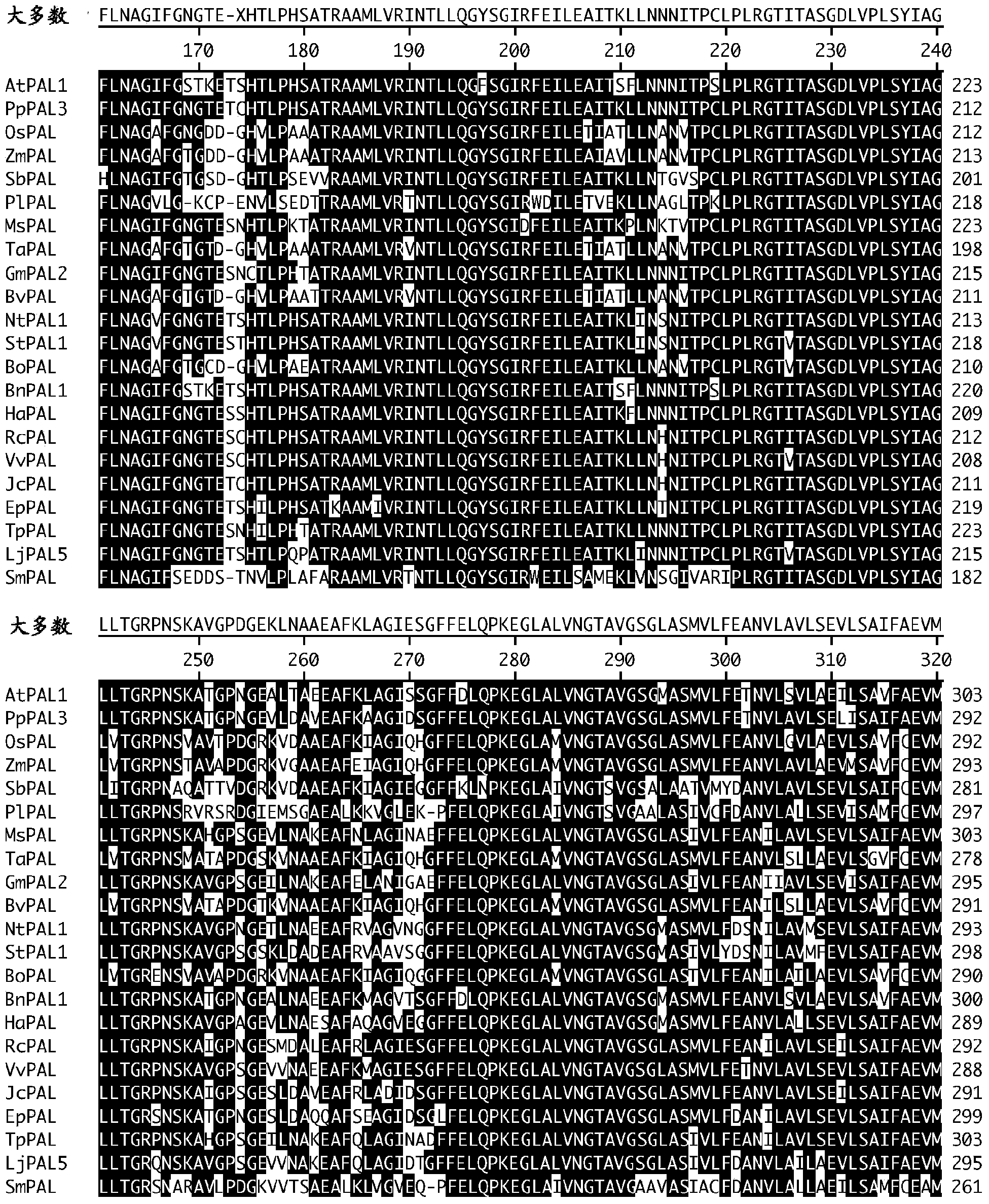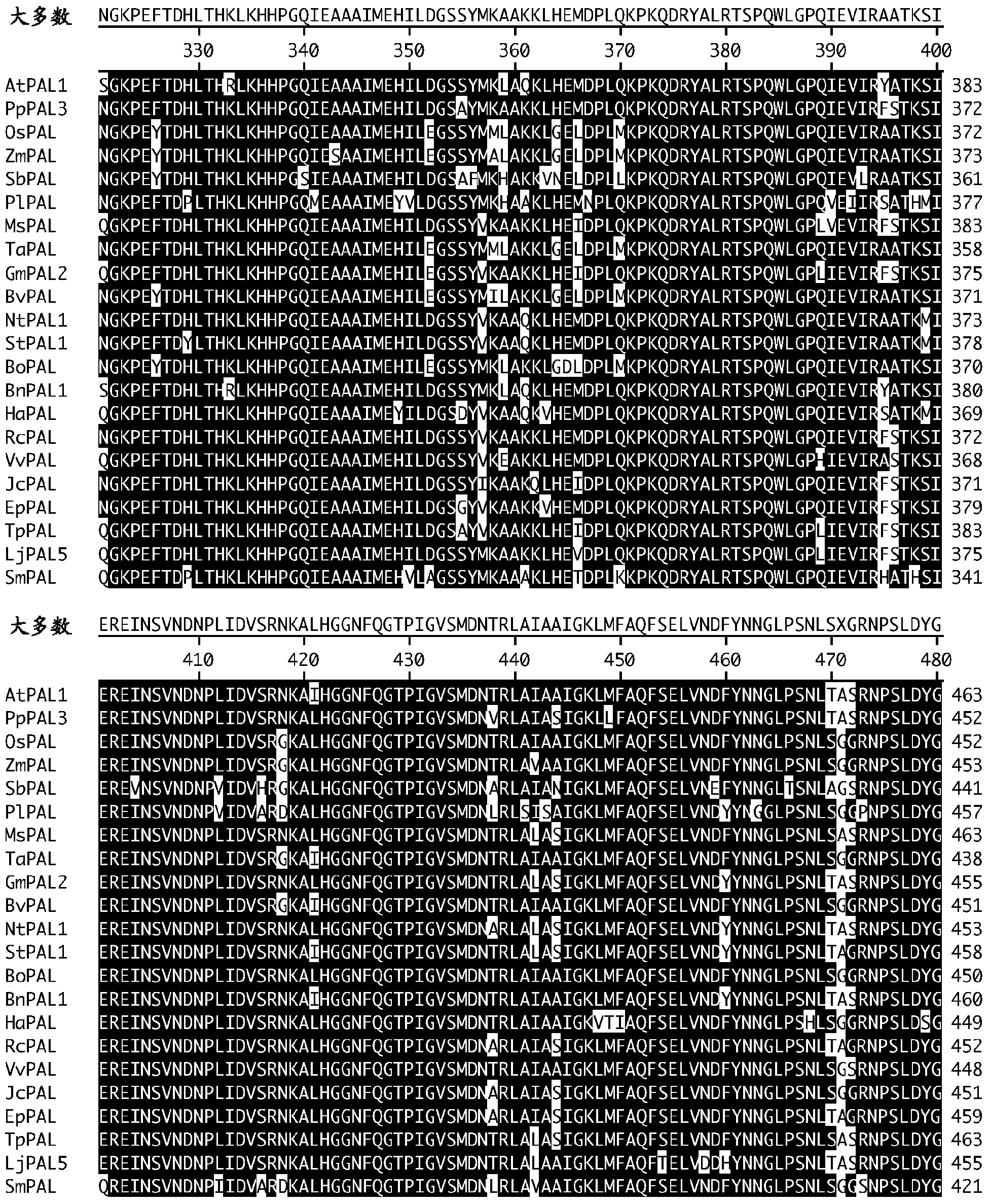Spatially modified gene expression in plants
A plant and gene technology, applied in the direction of cells modified by introducing foreign genetic material, genetic engineering, sugar derivatives, etc., can solve the problems of decreased biomass yield and difficult to obtain crops, etc.
- Summary
- Abstract
- Description
- Claims
- Application Information
AI Technical Summary
Problems solved by technology
Method used
Image
Examples
preparation example Construction
[0242] F. Preparation of recombinant expression vector
[0243] Once the promoter sequence and the coding sequence of the gene of interest (e.g., lignin biosynthesis enzymes, xylan biosynthesis enzymes, or transcription factors regulating secondary cell wall production) are obtained, the sequences can be used to prepare An expression cassette expressing the gene of interest. Typically, plant transformation vectors include one or more cloned plant coding sequences (genomic or cDNA) encoding proteins of interest (such as transcription factors) under the transcriptional control of 5' and 3' regulatory sequences. Vectors also typically contain a dominant selectable marker. In typical embodiments, such plant transformation vectors also contain a promoter of interest (e.g., a vessel-specific promoter as described herein or a promoter whose expression is regulated by a transcription factor that regulates secondary cell wall production), a transcription initiation Initiation sites, ...
Embodiment 1
[0265] Example 1: Secondary cell wall deposition in reengineered plants
[0266] This study combined 2 strategies for overcoming cell wall recalcitrance and filling fiber cells with cell wall polymers without altering plant development. The first protocol allows reducing lignin in places other than vessels, while the second protocol specifically increases cell wall deposition in woody tissues. This combinatorial strategy strategy uses synthetic biology to fine-tune lignin biosynthesis and establish new feedback loops to reengineer the control of secondary cell wall deposition.
[0267] Materials and methods
[0268] Plasmid construction
[0269] The protein coding regions of C4H (ref3) gene (AT2G30490), F5H (At4g36220) and CADc gene (AT3G19450) were amplified from Arabidopsis cDNA, and the translational start of VND6 gene (At5g62380) was amplified with appropriate primers (see Table 1). The 2756 bp region 5' upstream of the start site was pVND6 as genomic DNA.
[0270] Tab...
Embodiment 2
[0308] Example 2. Engineering in Arabidopsis (dicots) and Brachypodium (monocots) Modified Positive Feedback Loop
[0309] Figure 27 A cell wall deposition positive feedback loop is explained. Cell wall densification is based on the establishment of an artificial positive feedback loop to enhance the expression of fiber-specific transcription factors. It is established by expressing new copies of fiber-specific transcription factors (eg, NST1 ) under the control of inducible promoters downstream of xylan or cellulose biosynthesis. This protocol is compatible with xylan and lignin engineering strategies.
[0310] Figure 31 A shows UV images of wild-type Arabidopsis (dicots) and stem cross-sections of wild-type Arabidopsis genetically modified to contain the pCesA4:NST1 expression construct. Establishment of a positive feedback loop involving a secondary cell wall cellulose promoter (pCesA4) and a secondary cell wall transcription factor (NST1) enhances secondary cell ...
PUM
 Login to View More
Login to View More Abstract
Description
Claims
Application Information
 Login to View More
Login to View More - R&D
- Intellectual Property
- Life Sciences
- Materials
- Tech Scout
- Unparalleled Data Quality
- Higher Quality Content
- 60% Fewer Hallucinations
Browse by: Latest US Patents, China's latest patents, Technical Efficacy Thesaurus, Application Domain, Technology Topic, Popular Technical Reports.
© 2025 PatSnap. All rights reserved.Legal|Privacy policy|Modern Slavery Act Transparency Statement|Sitemap|About US| Contact US: help@patsnap.com



